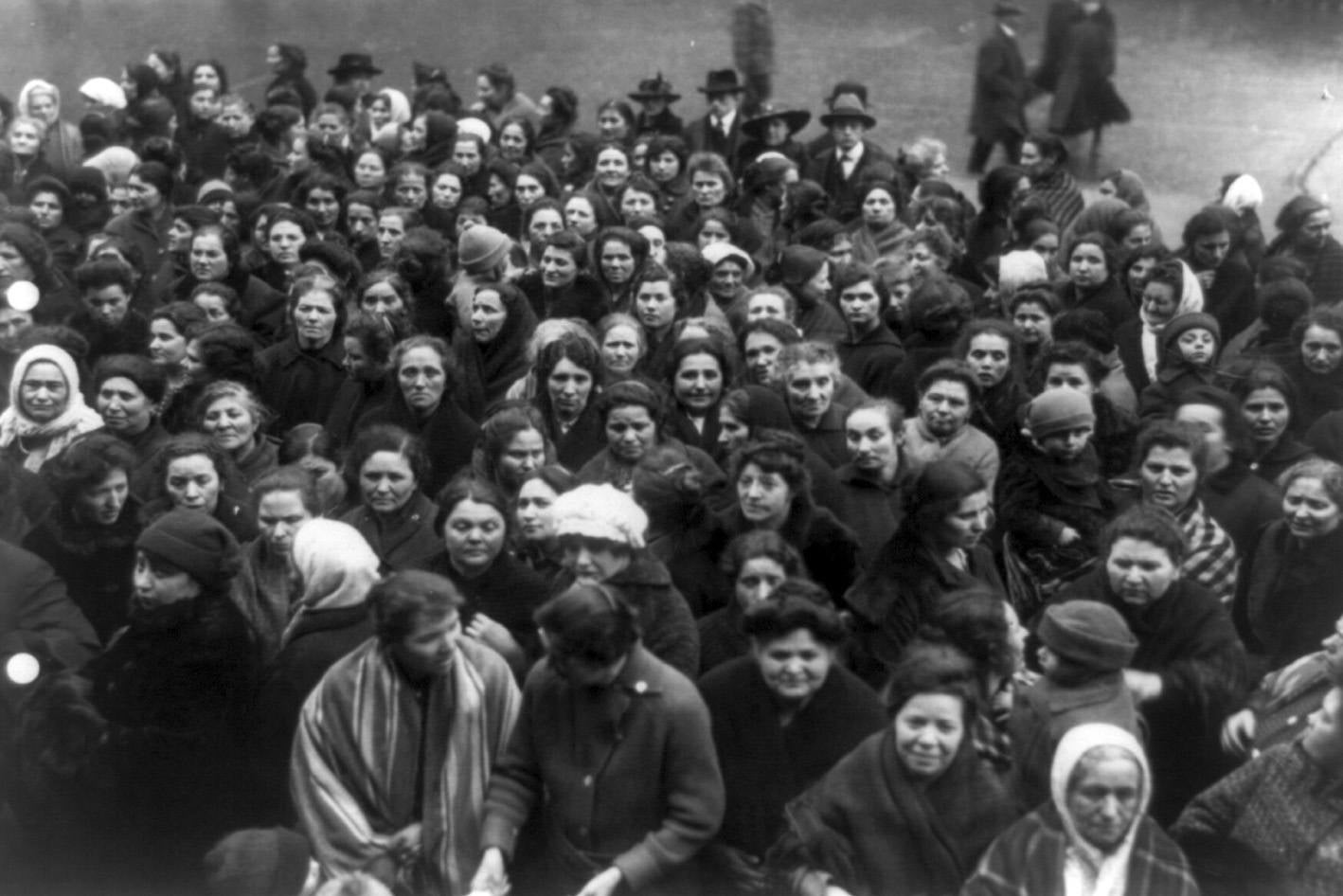On Monday morning, February 19, 1917, in the Brooklyn neighborhood of Brownsville, a woman stood in line to buy food for her family. Tensions along Belmont Avenue were running high. Although the prices of onions and potatoes had been rising over the past year, the costs of these foods, staples of Brownsville’s Russian Jewish community, had jumped quickly and sharply, by 20 to 50 percent. Onions were as much as 18 cents a pound; potatoes, 10 cents a pound; and chicken now unaffordable for most in this poor, overcrowded neighborhood at 32 cents a pound.
When the woman—her identity lost even to the first draft of history—discovered she didn’t have the money to pay for the ingredients she carried, she overturned a produce cart, setting off food riots and boycotts that eventually spread throughout the city. According to the following Tuesday’s New York Times, 1,000 women had gathered that day in Brownsville; the following week, some 5,000 stormed the upscale Waldorf-Astoria hotel in Manhattan, shouting, “Give us bread!”
The women of New York were not alone in voicing their outrage over rising prices. The previous month, women had rioted in West Cumberland County, Britain. The next, they took to the streets in Vienna and in Petrograd (today’s St. Petersburg) where bread line protests sparked the February Revolution. And in August, women protested in Melbourne. But the lasting effect of these demonstrations on food prices is unclear, and their place in history is even murkier.
For many years, scholars maintained that food riots were a phenomenon left behind in the eighteenth and nineteenth centuries. Food riots were understood to be spontaneous, localized economic protests that had no place in the twentieth century’s strong, centralized countries with their increasingly national markets. The events of 1917 were considered to be an anomaly—except they continued through the twentieth century and into the twenty-first. In 2007 and 2008, which saw steep increases in the prices of basic food commodities, there were food riots in 30 countries, from the “Pasta Protests” in Italy to the rice protests in Haiti. For the past year, Venezuela has been wracked by food shortages and riots, often quelled by tear gas and gunfire.
Faced with this reality, scholars have begun to reconsider food riots. More than a mass reaction to an immediate physical need, the food riot can also be seen as a form of cultural and political protest, often arising from groups outside the traditional power structure. “The food riot has always been about more than food—its appearance has usually signaled significant transitions in political-economic arrangements,” the economists Raj Patel and Philip McMichael wrote in 2009.
Seen in this new light, the women in 1917 Brownsville—like those of West Cumberland, Vienna, Petrograd, and Melbourne—weren’t protesting for lower prices alone. They were finding a voice. In the years before universal women’s suffrage, these women were drawing attention to the poverty of their neighborhoods. The riots started in the markets but, later, women marched on to City Hall, many with their children in tow. “We are starving—our children are starving. But we don’t want any riot. We want to soften the hearts of the millionaires who are getting richer because of the higher prices,” Ida Harris pleaded with representatives of Mayor John Purroy Mitchel. “Won’t you give us food?”
Weekly Newsletter
The mayor’s eventual response, however, was not well received. The city’s Food Supply Committee arranged to sell large amounts of smelt, Brazilian beans, and hominy to local grocers at very low prices. These items were little known in the Russian-Jewish community and in other communities that had joined the protests, and intentionally so; the city did not want to compete with grocers selling more popular items. On March 2, 1917, the New York Call reported on the initial response: “Large mobs of East Side women… mauled the sellers and returned some of the fish to their native element through open manholes.” The women were not protesting for cheap food, but for the dignity that came with being able to afford the foods they had traditionally fed their families.
After almost a month of boycotts enforced by the riots, the cost of onions, potatoes, chicken and other staples of the Jewish table returned to near pre-protest prices. The relief was short-lived, however: Food prices continued to rise through 1917 and 1918 and shortages increased when the United States entered World War I in April, 1917. The events of that year shaped modern understanding of food riots as economic, political, and cultural protests. The food riot, as Patel and McMichael write, “is not quite yet ready for the dustbin of history.”







